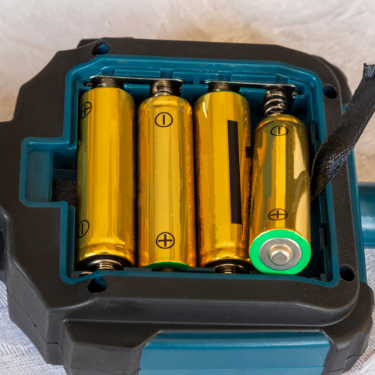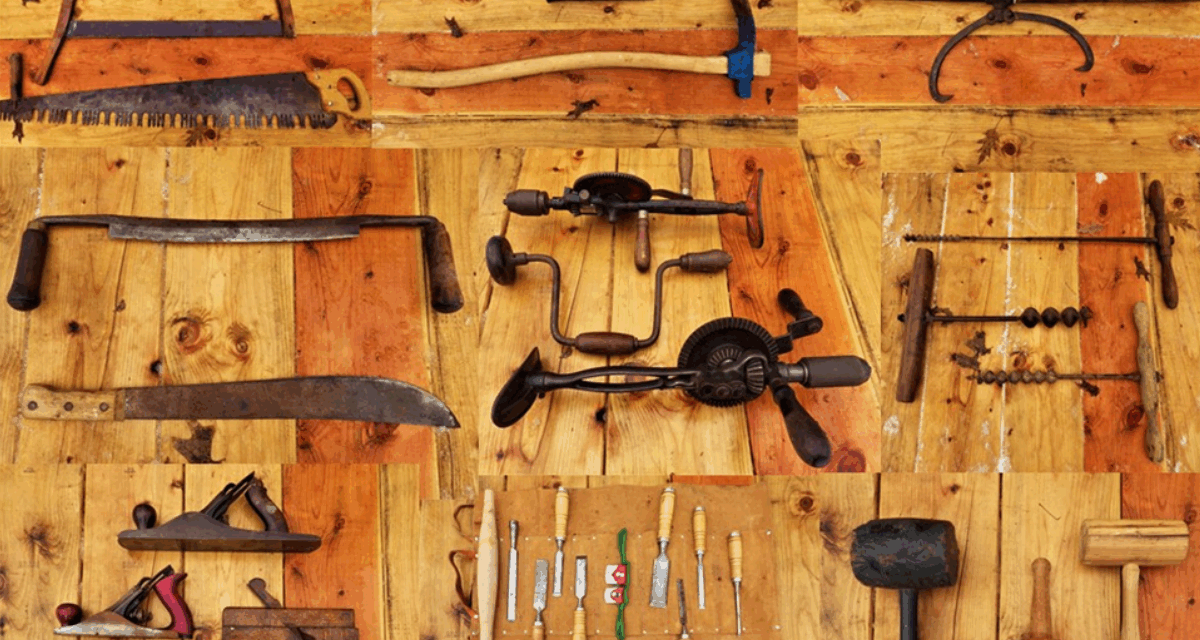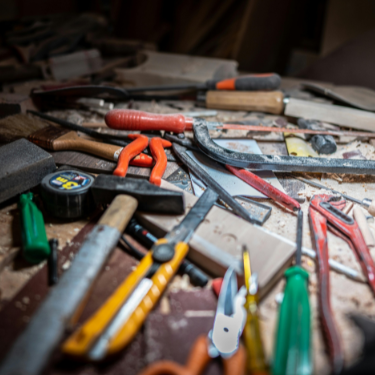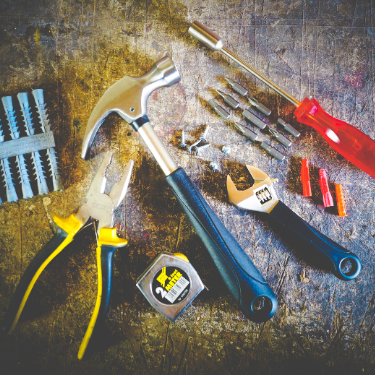Here’s the telegram: think off-grid. Power tools that plug in can’t do much in a crisis because the power-grid could be down. Battery operated tools are an option but if you can recharge them with solar panels you are way ahead of the game. But the traditional go-to option are hand tools.
Long before we plugged stuff in we used hand tools to build, fix, repair and make just about anything. We’re going to start with those hand tools and then cover some battery powered tools that can be recharged with solar panels just because that’s an option today.
So, What’s the Crisis?
There’s no lack of concerns about what could fail. Infrastructure failure, cyberterrorism, war, the list goes on. The result is a level of self-sufficiency that transcends everyday life. It brings us to a level of self-sufficiency that requires resourcefulness, supplies and, most essentially, tools. Tools built the pyramids and every civilization we know. If civilization is in crisis, it won’t survive without tools.
Tool Basics
And here’s another telegram. If you want good advice about tools from anybody it’s the Amish. The Amish are famous not only for their abilities with timber-frame construction but furniture making. And they do it all by hand. An ex-Amish actually shares a lot of these valuable secrets right here, if you’re curious to find out more. Meanwhile, here’s are some of the indispensable tools they couldn’t live without:
- Axe and hatchets. These are indispensable for cutting, shaving and shaping. A skilled ax-smith can do anything with a good set of axes and hatchets.
- Splitting Maul. A splitting maul makes short work of splitting logs. Wood fired heating is the standard for off-grid living and in a crisis you need to have wood that’s split and easy to burn.
- Sledgehammer. It’s all about brute force. A sledgehammer gives you the weighted impact you often need to make things happen from demolition to driving a splitting wedge.
- Splitting Wedges. A set of splitting wedges will allow you to make rail from logs, split lumber stumps that resist the splitting maul and even make coarse shingles.
- When there’s no gas for a chainsaw, a backsaw can get you through the biggest trunk. Some are two-handed allowing two people to cut through the largest logs and timber.
- Hacksaw. You can’t cut through metal without one.
- Hand saw. When timber is cut to lumber a handsaw allows you to do the fine cuts that construction and especially furniture making requires.
 Framing hammer. If you only have one hammer a framing hammer is the best choice. It lacks the curve you see on most hammers but not only gives you the leverage to drive and pull nails but also falls in the “brute force” category.
Framing hammer. If you only have one hammer a framing hammer is the best choice. It lacks the curve you see on most hammers but not only gives you the leverage to drive and pull nails but also falls in the “brute force” category.- Complete screwdriver set. It makes sense to salvage all hardware, and screws are the best fastener for wood-frame construction. You just have to make sure you have the screwdrivers to get them into and out of the wood.
- Complete wrench set. You can buy a complete wrench set for a small amount of money. Anyone trying to build or repair with nuts and bolts will be grateful for a set that fits most bolts.
- Vise grips. Maybe the ultimate survival tool. It can do anything when other tools fail.
- Wire cutters. The power may be off and there may be little to do as an electrician, but cutting fence wires, bailing wire or any other thick strands of metal that are tough to cut.
- Bolt cutters. From padlocks to thick wire and even rebar, bolt cutters always cut through where wire cutters fail.
- Cable pulley. If you have to lift, pull, drag or leverage anything a cable pulley will do the job.
- Hand drills and bits. Without power you are a big disadvantage when you want to do something as simple as drill a hole. Hand drills to the rescue and you can often find them at resale shops for cheap because most people don’t think they need them anymore.
- Wood planers. The furniture maker’s friend and also works great for any general construction project.

- Froe. A froe allows you to split shingles from a log. You can roof a shed, house and even a barn with your own shingles. But you’ll need a froe to do it.
- C-clamps. The best way to hold something in place while you work on it and indispensable when you are waiting for glue to set on anything.
- Level. Sometimes things have to be straight and true. A level is the only way to know. It would be wise to have 2 to 3 sizes from 8-inches to 4-foot. That should cover most of what you need to level.
- Drawshave. The best and only way to remove bark from trees. If you’re harvesting timber to make into lumber you won’t get far without a drawshave. And if you’re curious about the old-time survival uses of bark, like turning the inner layer into flour for bread, you’ll find step-by-step instructions in this guide.
The combination of these fundamental hand tools could allow you to take a tree from lumber to fine furniture or a log cabin. There would be no lack of labor or skill required, but our pioneer ancestors did it with great purpose and success.
The Battery Powered Tool Option
Theres’s a remarkable range of tools that are battery powered. And what makes it all work is that the batteries can be recharged with solar power, a car engine battery and even a hand cranked generator. Muscle power always works but if something as simple as a battery powered tool lets you do the work it all works.
The battery powered options are obvious. What’s important is to have multiple batteries charging with solar panels at the same time. Batteries eventually run down and it’s quite nice when you can just swap out a dead battery for a fresh one. Here are the usual suspects for rechargeable battery tools:
>> This Is How a Car Battery Can Save Your Life In a Crisis <<
- Drill and a good collection of bits.
- Hammer drill. And a variety of screw heads from star bits to square bits to Philips.
- Circular saw. And various blades from crosscut to ripping to fine tooth blades for metal.
- Reciprocating saw (Sawzall) for cutting posts and other timber extending up or out from construction.
- Solar panels or Complete Solar Generator System. The best way to recharge those batteries if the grid is down. And the power is free.
There’s More…
The types of tools you choose to have on hand have a lot to do with your location, the situation and your skills. Someone who is actively farming or gardening would require a whole different tool set. The same is true for someone who is fixing mechanical equipment. The key is to step back and think off-grid. If there is no electricity and you don’t have the ability to generate power with a generator or solar, what kind of hand tools would you need? Chances are good they will be relatively inexpensive, and it just makes a lot of sense have those hand tools “on hand.”
DIY Tools You Can Make from Bark, Rocks and Trees
75+ DIY Projects That Help You Survive Without Electricity (Video)
Here’s What You Need to Build a Forager’s Toolkit
Off-Grid Tools You Should Look For At Flea Markets
















